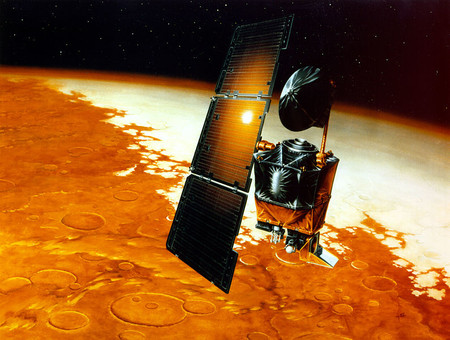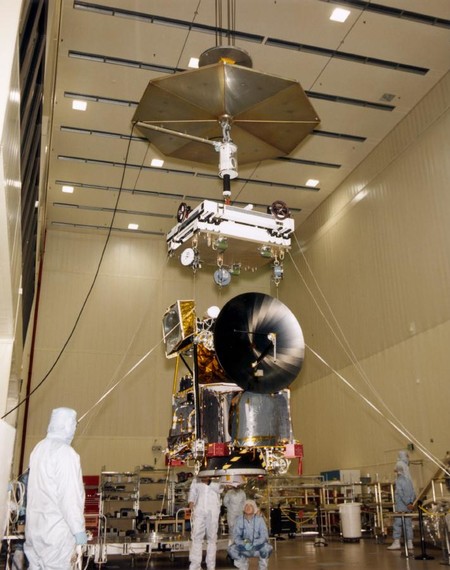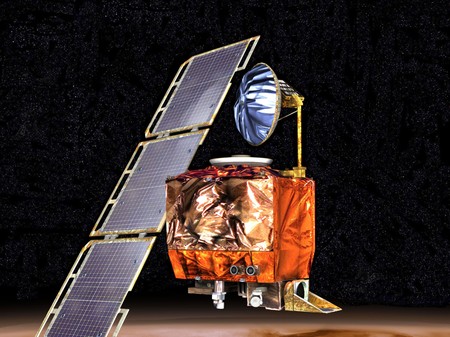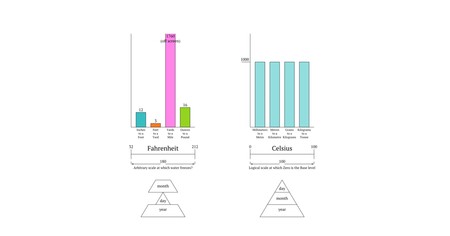The day NASA crashed a probe on Mars because someone forgot to use the metric system

On September 23, 1999, after nearly ten months of an arduous journey to Mars, NASA engineers prepared to place the Mars Climate Orbiter probe into the orbit of Mars. With everything ready to celebrate the success of the mission, the probe hid behind the planet and never came out again, they lost control of the artifact and it ended up crashing on Mars. Someone forgot to convert from imperial to metric, an oblivion of 125 million dollars.
Over the years it has become one of NASA’s greatest failures and also a valuable lesson to be learned. Mars Climate Orbiter has gone down in history not by reaching Mars, but by show us that using a standard in measurements is essential. Also how important it is to verify things correctly, especially if you are going to take a $ 125 million project to Mars.

My software in SI, your pieces in imperial units
Now, how did a group of engineers like NASA’s get wrong converting between different units? They were not actually wrong doing the conversion calculation, as this story is often told. The problem is that part of the project was designed using the Imperial System and part using the International system.

At that time NASA had already started to use the International System, which is the one used by the scientific community throughout the world. However, the United States continues to use the Imperial System and therefore many NASA vendors also used this system when manufacturing its parts, components and other products for NASA. Although NASA required component data to be converted, vendor Lockheed Martin did not. And what happened happened.

Engineers assembling the Mars Climate Orbiter, that is, mixing components with the Imperial System and the International System.
One of the pieces of software that Lockheed Martin supplied operated and reported its results in pounds as a unit of force. The NASA system that collected these data however was designed using the International System with Newton as the unit of force. A communication error between different parts of the system operational.
The catastrophe was generated little by little throughout the months of the trip of Mars Climate Orbiter. The system calculated the impulse that the probe had to take each time the engines were turned on and from the NASA control center this impulse was being sent in such a way that the probe remained in a specific position to enter orbit properly. But of course, since the data is incorrect every time the engines were started the probe kept deviating of its expected route.

Finally, when it approached Mars, the probe was on a trajectory that would place it at an altitude of between 150 km and 170 km (relative to Mars). It was scheduled to orbit at an altitude of 226 kilometers, but as the minimum safe to place the probe was between 110 and 80 km, they decided to move on. The reality was worse the probe did not reach Mars at an altitude between 150 km and 170 km, but entered orbit at a paltry 57 km of Mars.
We do not know exactly what happened because the connection with the probe was lost when it circled the red planet, but it is assumed that it entered the upper atmosphere thus causing its fall on and subsequent destruction. It is also possible that it deviated from orbit and continued its journey through the Solar System. What is clear is that nothing more has been known about her for two decades.

The Mars Climate Orbiter probe before being sent to Mars.
How did nobody know before? Well, actually yes. During their journey from Earth to Mars, some engineers realized that the desired trajectory was not matching the data they were receiving from the probe. Normally these errors are solved by making a correction on the trajectory, but this time it was necessary to make more corrections than usual. Apparently they tried to open an investigation in this regard, although in the end nothing was achieved.
Is Lockheed Martin the company responsible for the failure of the mission? For NASA, which subsequently opened an in-depth investigation to understand the cause of the failure, no. The organization assumes the failure of the mission as its own due to poor management of the project’s security. For Failure to carry out adequate checks and controls that would have made it possible to detect the discrepancy in the data due to the different unit systems that were used.
Years later it seems that we have learned our lesson. Many other probes have been launched into space and several of them with the objective of reaching Mars. For the next few months, in fact, a total of three missions are expected to reach the red planet. We have the Perseverance of the United States, Tianwen-1 of China and the mission of the United Arab Emirates.
United States vs. the world
That as humans we have explored Mars and we still have errors for using different measurements is at least inexplicable, but more inexplicable is that in the middle of 2020 and in a more global world than ever, different unitary systems continue to exist. Today only four countries (actually three because in the UK it is mixed) use the Imperial System still. Two of them are (in context) negligible globally: Liberia and Myanmar. The problem is that one of the world’s major powers, the United States, maintains the system. And there are those who defend that it is better.
Regardless of all the advantages that the metric system has been shown to have, it is not so easy to change usage in a whole country. It is not that they have not tried, in fact the United States Congress approved in 1975 by means of the ‘Law of Metric Conversion’ the SI as the preferred unitary system. This law did not prohibit the Imperial System, so it remained present and companies continued to bet on this system in their consumer products.

Graph showing the inconsistencies of the Imperial System versus the International System.
Why didn’t it adapt? Because learning a new system is complicatedIt frustrates people and companies don’t want customers frustrated with their products. In the same way that we (those of us who use the SI) find the Imperial System incomprehensibly complicated, they find the International System confusing with respect to the Imperial System.

But change is possible, some countries currently have a mixed system that is increasingly towards the IS. Others like Canada for example made the transition in 1970, although it took them more than fifteen years. Whatever Americans want to use, the scientific community and the main organizations have adapted the International System By consensus, a repeat of the Mars Climate Orbiter case is less and less of a threat.
Via | 99% Invisible
More information | NASA Y Wikipedia
Reference-www.xataka.com